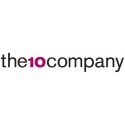Marketing Lessons InsurTech CEOs Don’t Always Focus On, But Should
When I recently moved to a new state and had to switch my auto insurance, I thought it would be quick and easy. I was wrong. It was complicated, and included multiple pages of paper documents that had to be signed, scanned, re-scanned, re-scanned again, and ultimately shipped overnight. Only after completing this process and several days did I have my new insurance cards. For someone who is the ultimate online consumer (if I can buy it online, I will), this was a hassle to say the least.
But maybe I shouldn’t have been surprised. The property-casualty insurance industry is a complex one, marked by long-term agent-carrier relationships, regulations that vary state-to-state, processes and legacy technology. There is a huge opportunity to use technology to advance the way insurance is delivered and serviced. And now the pace of change is accelerating, driven, in part, by consumers’ expectations for immediate gratification. In a world in which you can order a car service, buy food or clothing with one click, or access any aspect of your banking or investment accounts 24X7, much of insurance is still different.
This opportunity has given rise to InsurTech, the insurance-focused version of FinTech. Right now, the industry’s getting a lot of attention, attracting significant investments for start-up insurers, MGAs, and technology solutions providers. While some of these companies are focused on new business models for consumers, others are b-to-b, dependent on selling solutions to and partnering with carriers and agents, a challenge in an increasingly crowded market.
Through our work with the Insurance Digital Revolution, an industry initiative formed to advance digital technology adoption in insurance, and our partnerships with VCs and entrepreneurs, we’ve seen that many CEOs are focused on technology and solutions, but fewer are getting the most out of marketing. So we’ve pulled together these four lessons to help the b-to-b players break through:
1.Keep asking yourself so what? Have you ever been presented with a long list of features for a new product, and said to yourself, so what? Some features, like easy-to-use, flexible, secure, fast, SaaS-based, are so common they lose meaning with buyers. The best companies don’t just talk about features, they talk about benefits -- in very specific ways. These companies understand their customers and speak to them in terms that have real meaning. To get to the true benefits of your solution, after every feature, keep asking yourself so what? Keep it going until you can’t go any further. For example, a new analytics software solution might be easy to use. So what? That allows you to create models instantly. So what? Your underwriters can see the effect of a rate change based on market conditions today. And there’s the benefit.
2.In a market where everyone has a better way, say something different. Most solution providers come to market because they really do have a better way. But as a marketing and sales message, we have a better way is not enough. It only has meaning for prospects who are extremely frustrated with the current way, and doesn’t help your solution stand out. The same can be said for we’re fast or we’re easy to use.You’ll see that many technology companies say the same things. Test yourself by substituting another solution provider’s name into your sales presentation. If it still makes sense, you have work to do to differentiate your message. And while it’s okay to make bold claims (as long as you can back them up), don’t focus on too many. One company used a revolving list of 10 big claims about its solution. It not only diluted the message, but the company lost credibility by using so many superlatives, like best and most powerful. It can take discipline, but focus on only one or two things that have real meaning to your customers.
3.Fear doesn’t motivate people to buy. For many InsurTech businesses, disruption is part of the value proposition: some are clearly built on the idea of disruptive business models, and others on empowering carriers and agents to avoid being disrupted. But focusing on fear, and too little on the vision or the opportunity to improve business, won’t get you very far. When you’re selling to insurance carriers and agents, you’ll need to build trust in your solution. That means demonstrating not only how it works, but the results your customers achieve. One of the easiest ways to do this is let your customers tell their stories, on video. And you don’t need a big production -- this is an area where authenticity trumps sophistication.
4.Let your community work for you. While customer testimonials and case studies are important in establishing credibility, they’re only the first step. Not only must you convince prospective customers that your solution works, you must give them compelling reasons to change. Building community can take many forms, including creating and working with user groups, holding customer meetings, and using social media, such as closed networks on LinkedIn, to discuss questions and ideas. In one example, a technology company implemented a sandbox and feedback loop, for customers to make suggestions and test out new versions of the solution. This created a core community of customers who were clearly vested in helping the company grow.
The P&C industry is on the cusp of major digital transformation which will advance how insurance products are developed, priced, sold and serviced. The investment flowing into InsurTech businesses highlights the scale of the opportunity. But more dollars creates a more crowded field of solution providers. While many entrepreneurs get into the business with a vision backed by technology, marketing can be an important tool for growth. We’ve seen firsthand that not every new company is doing this well. There’s a real opportunity for those who do, to stand out.
